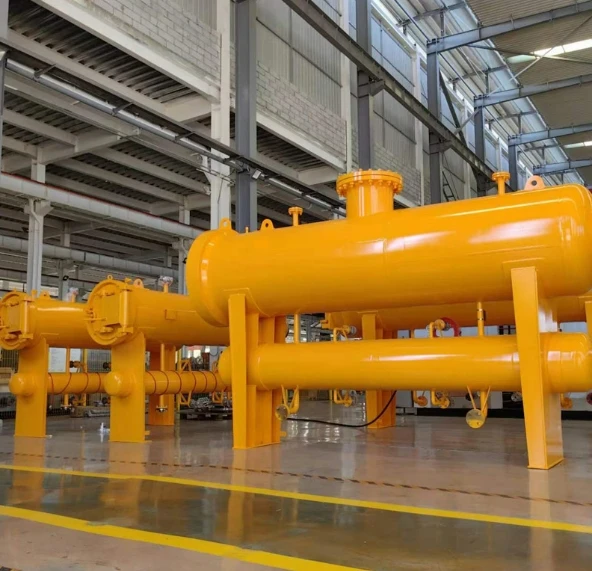
Nov . 13, 2024 11:27
Back to list
pressure reducing device
Understanding Pressure Reducing Devices Importance, Types, and Applications
Pressure reducing devices, commonly known as pressure regulators or pressure reduction valves, play an essential role in various industries by managing and controlling the pressure of gases and liquids. From domestic applications to industrial processes, these devices ensure safety, efficiency, and proper functioning of systems reliant on pressure.
Importance of Pressure Reducing Devices
The primary function of a pressure reducing device is to lower the input pressure from a source, such as a gas cylinder, a water main, or a compressed air system, to a predetermined output level that is suitable for other equipment or processes. This regulation is crucial for several reasons
1. Safety High pressure can lead to system failures or catastrophic events. By reducing pressure to safe levels, these devices help prevent accidents, ensuring a safer working environment.
2. Efficiency Operating machinery and equipment at optimal pressure levels enhances their efficiency. Pressure reducing devices contribute to the longevity of equipment and reduce energy consumption.
3. Precision Many applications require precise pressure for optimal performance. For instance, in laboratory settings, accurate pressure control is vital for conducting experiments.
4. Protecting Equipment Sensitive equipment, such as medical devices and pneumatic tools, can be damaged by excessive pressure. Pressure regulators ensure that these devices operate within their specified limits.
Types of Pressure Reducing Devices
Pressure reducing devices come in various designs and operating principles, making them suitable for different applications. The most common types include
1. Spring-Loaded Regulators These are the most widely used pressure regulators. A spring mechanism adjusts the valve position in response to changes in output pressure. When the output pressure drops, the spring compresses and allows more fluid to flow through, stabilizing the pressure.
2. Diaphragm Regulators Utilizing a flexible diaphragm that responds to changes in pressure, these regulators are ideal for applications requiring high precision. They are often used in gas distribution systems.
pressure reducing device

3. Electronic Pressure Regulators These devices use electronic sensors and actuators to maintain pressure, allowing for more precise control. They are commonly employed in automated systems where digital integration is necessary.
4. Backpressure Regulators Unlike traditional pressure reducing devices, backpressure regulators maintain a set pressure upstream, allowing for pressure stabilization in processes where pressure must be kept constant.
Applications of Pressure Reducing Devices
The applications of pressure reducing devices are vast and varied, spanning multiple fields
1. Gas Supply Systems In industries that utilize natural gas, oxygen, or other gases, pressure regulators ensure that the delivery pressure is suitable for combustion or other processes.
2. Water Distribution Municipal water supply systems use pressure reducing valves to maintain consistent pressure in pipelines, preventing damage and ensuring adequate flow rates.
3. Manufacturing In manufacturing processes, precise pressure control is necessary for tools, machinery, and production lines, which rely on pneumatic and hydraulic systems.
4. Food and Beverage The food and beverage industry employs pressure regulators in bottling and carbonation processes, ensuring the quality and safety of products.
5. Pharmaceuticals In drug manufacturing, maintaining specific pressure levels is critical to ensure the quality and efficacy of medications.
Conclusion
In summary, pressure reducing devices are an indispensable component across a myriad of industries, offering safety, efficiency, and precision. Understanding the functionality and applications of these devices is crucial for professionals in engineering, manufacturing, and other related fields. As technology advances, the designs and capabilities of pressure regulators continue to improve, providing even greater control over fluid dynamics and contributing to the overall safety and efficacy of systems they serve. Whether in a household setting or a complex industrial process, the importance of these devices cannot be overstated, as they play a vital role in the seamless operation of pressure-dependent systems.
Latest news
-
Safety Valve Spring-Loaded Design Overpressure ProtectionNewsJul.25,2025
-
Precision Voltage Regulator AC5 Accuracy Grade PerformanceNewsJul.25,2025
-
Natural Gas Pressure Regulating Skid Industrial Pipeline ApplicationsNewsJul.25,2025
-
Natural Gas Filter Stainless Steel Mesh Element DesignNewsJul.25,2025
-
Gas Pressure Regulator Valve Direct-Acting Spring-Loaded DesignNewsJul.25,2025
-
Decompression Equipment Multi-Stage Heat Exchange System DesignNewsJul.25,2025

